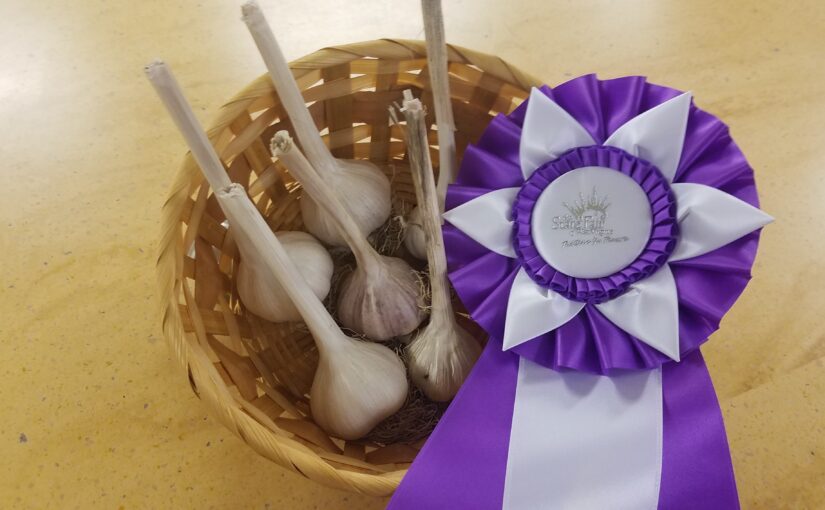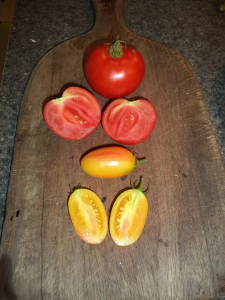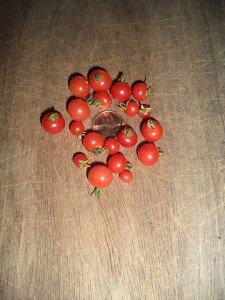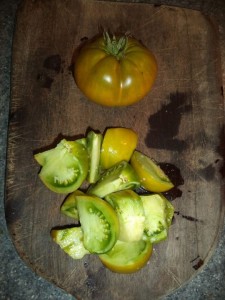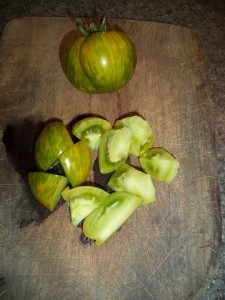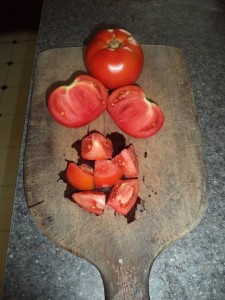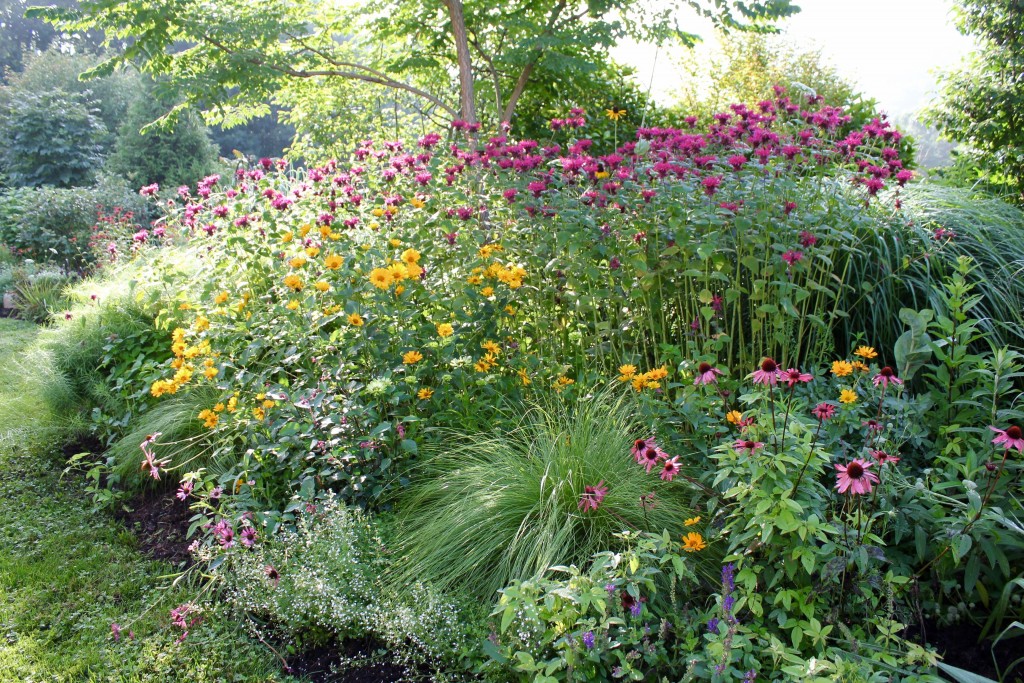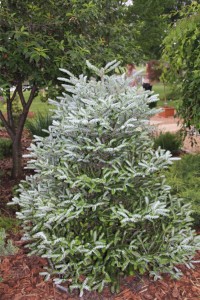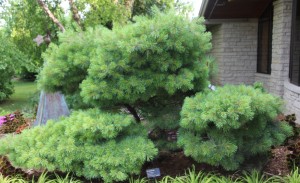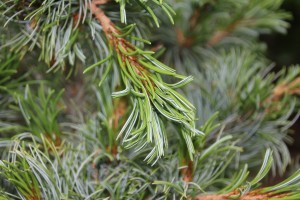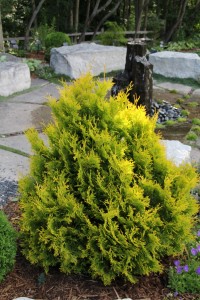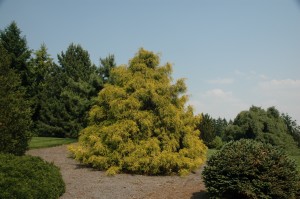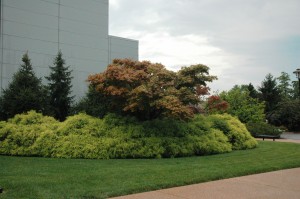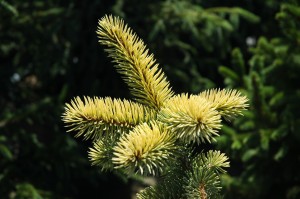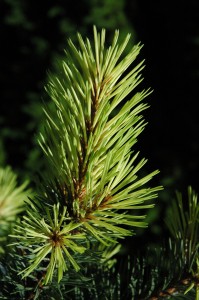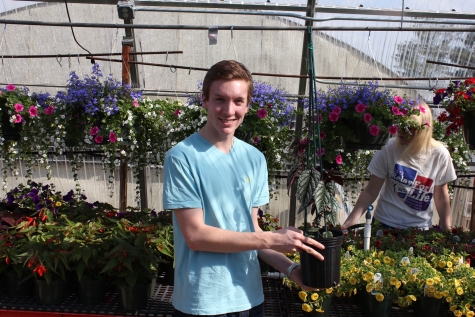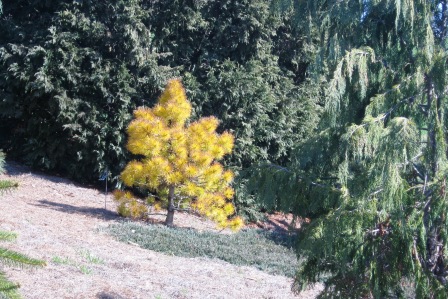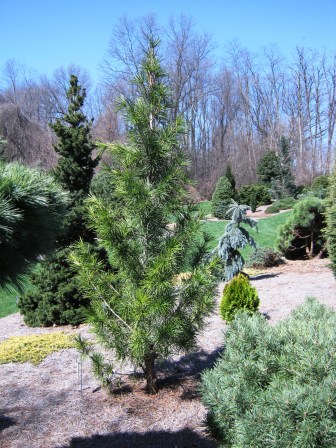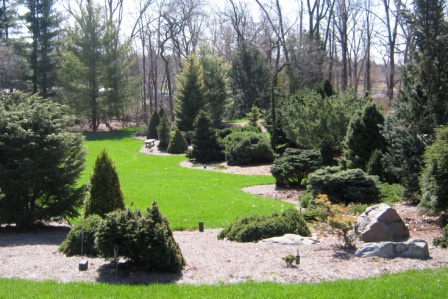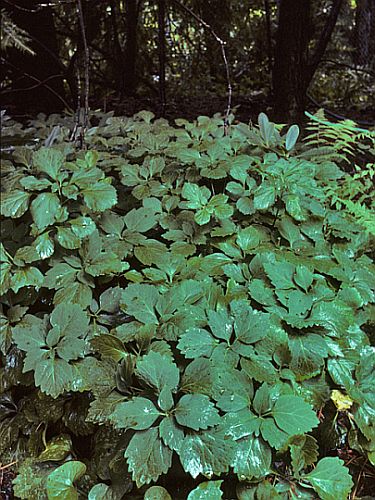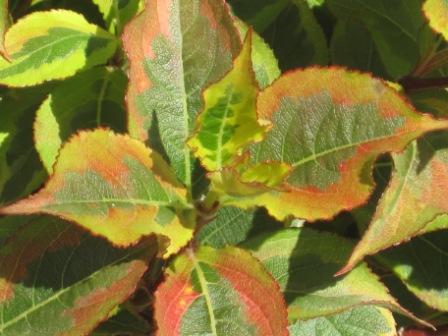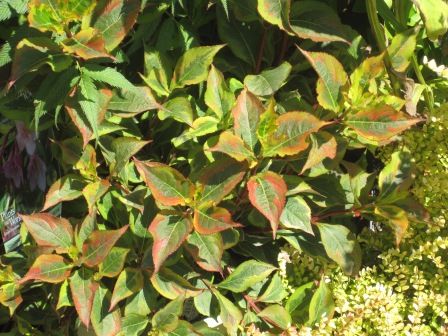I love a fair! Which is a good thing since I find myself at a lot of them as an extension professional. It seems like fairs attract extension folks like honey attracts flies. We’re always involved in the 4-H activities – the livestock, project displays, and contests. Sometimes we pop up other places as well. The one thing that I get asked to do multiple times each summer is act as a judge for horticultural entries. Usually for 4-H youth entries, but sometimes for the open class where anyone can enter their best (or sometimes not so best) produce, flowers, and more. I thought I’d take a few moments to talk about what I look for as a judge, so if you ever want to enter your best tomatoes or dahlias at the fair you’ll know what to do to get the best ribbon possible. And even if you aren’t going to enter something into the fair, the rules and guidelines we use can help you select quality seeds and plants for your own garden or help you pick out the best produce at the grocery store or farmers market.

The fact is, many of the same qualities I look for and skills I use when judging produce and flowers at the county fair are also ones I use as a trial judge for the All-America Selections (AAS) program. I recently attended the AAS/National Garden Bureau/Home Garden Seed Association summer summit and was discussing fair judging with some folks from seed companies. They were excited by the process, and especially by the fact that one of the things that I judge (and have gotten fairly strict about) is that the fair entry information contain the cultivar or variety name. They found this exciting because companies, especially smaller companies, put a lot of work into developing new cultivars, and when the general public identifies specific cultivars as being high quality (as in, I grow XXXX cucumbers because I think they are the best) or at least being able to identify the qualities of specific cultivars then it is sort of like a recognition of the plant breeders and distribution company’s work (and also puts money in their pockets). As home gardeners, it is important to know which cultivars or varieties work best for you and to be able to identify the qualities you prefer. It can also be handy to see cultivars out in “the wild” and be able to recall the name of plants you like, which is why the All-America Selections program has display gardens where you can see the edible and ornamental winning plants up close and personal. I’ve written about the trial process for this blog before.

Now back to the fairs – this year I used my judgmental eye at five county fairs in the course of three weeks – with three of those fairs in one week. I’m not sure why I’m so popular, maybe because I’m good at it or maybe because nobody else will do it. In either case, I do my best to not only judge fairly and by the rules, but also provide valuable feedback as a learning opportunity for youth. The whole point of fair entries and projects, from our point of view at extension, is not that a kid gets a blue ribbon (in Nebraska the top standard ribbon is purple, though, which I had to adjust to) but that we help raise blue ribbon kids. In some counties I actually talk to kids, interviewing them on how they grew stuff and giving them feedback on their entries. When I don’t interview, I fill out a score sheet and provide comments on positives and negatives of each entry.
Here are a few of the things that I look for when judging, and how they might help home gardeners:
- Overall quality, appearance, and health – this is the one that most can identify with. Does the produce item or flower look appealing and high quality. Is it free of blemishes, diseases, bug holes, etc. You’d be amazed at the quality of some things we get at the fair. Of course, since I usually judge items for kids I do try to provide feedback on how to improve quality overall. Basically, my reference point is “would I buy this at full price a the market or grocery store”.
- Correct preparation – this is one where lots of folks get tripped up. For produce items we are often looking for whether or not the item has been harvested correctly, whether or not the stem has been removed or trimmed properly. It varies by produce item. These rules seem superfluous and overkill, but they actually are based on guidelines for how to best prepare produce and flowers to extend their shelf life and storability. For example, in Nebraska our guide says to leave a ¼” piece of stem on cucumbers, to remove the blossom cap/stem (sepals) from tomatoes to reduce damage to fruit, to trim beet stems to 2”, to pull (not cut) rhubarb and leave 2” of the leaf blade attached, and so on and so forth. These guidelines all help reduce damage to produce items or keep them fresher longer – so these guidelines can be handy for home gardeners, too. Herb stems are to be cut a certain length and kept in water (like a bouquet) with the leaves below the water line removed. For flowers, rules will often state how large of a specimen to provide, and to remove the leaves below the water line. Rules vary by state and by fair, but many of them are fairly consistent here. You can find our Nebraska preparation guides for produce and flowers to see how best to harvest and prepare crops and flowers for storage or usage.
- Uniformity of size, shape, color, etc. – this one also trips a lot of people up. First, most fair rule books will state a specific number of one item that needs to be provided, so that a judge may judge consistency and uniformity across multiple specimens. For example, our fairs require two specimens of larger produce items (slicing cucumber, zucchini, eggplant, etc), five specimens of medium size items (slicing tomatoes, carrots, potatoes, pickling cucumbers, beets, etc.), and twelve specimens of small items (cherry tomatoes, string beans, etc.). Flowers usually require five stems, but larger specimens like sunflowers may only require three. All the specimens provided in the exhibit should be as uniform as possible. All of the produce items and flower stems should be exactly the same size. Being the same level of maturity is also important and also leads to uniformity of color, especially in produce items. Color uniformity is especially important in flowers. I use this uniformity rule when judging our AAS trials as well – do the plants perform consistently across the whole plant in terms of harvest or flower appearance. This is a useful skill for home gardeners as well, as you can judge how well a specific cultivar or variety performs for you. You want to grow plants that perform well and provide consistent produce or flowers and not plants that only produce a few good items here and there with questionable produce or flowers mixed in.
- Correct identification and cultivar names – as I stated earlier, the correct identification of the plant (like don’t enter a jalapeno pepper as a bell pepper) and the cultivar or variety are important. Knowing what the actual end product is supposed to look like is helpful for gardeners to know what they are growing, understand the traits that they want in the plants, and how to select the seeds or plants with the traits they desire. That’s why the seed company reps got excited about this part – because having gardeners identify specific (newer) cultivars as the ones with the traits they want is important. It takes garden selection from “I want a slicing tomato” to “I want this specific cultivar of tomato because I know it does X, Y, and Z, so I’ll buy it from this specific seed company that sells it. That in part is what we do with the All-America Selections trials. We try out new things (before they hit the market) to test them out for taste, color, disease resistance, and a whole bunch of other things to give a “stamp of approval.” So any time you see that AAS symbol you know there have been several judgmental eyes (including mine) have assessed those plants and found them worthy.

So next time you visit a fair take a look at the exhibits to see if you see what a judge looks for. And think about entering your produce or flowers in a fair near you just to see how your garden skills stack up with your neighbor’s. Even if you don’t win best of show you can have fun and learn a bit along the way. And even if you don’t enter at the fair, you can use your judgement to pick the best plants for your garden for years to come.

